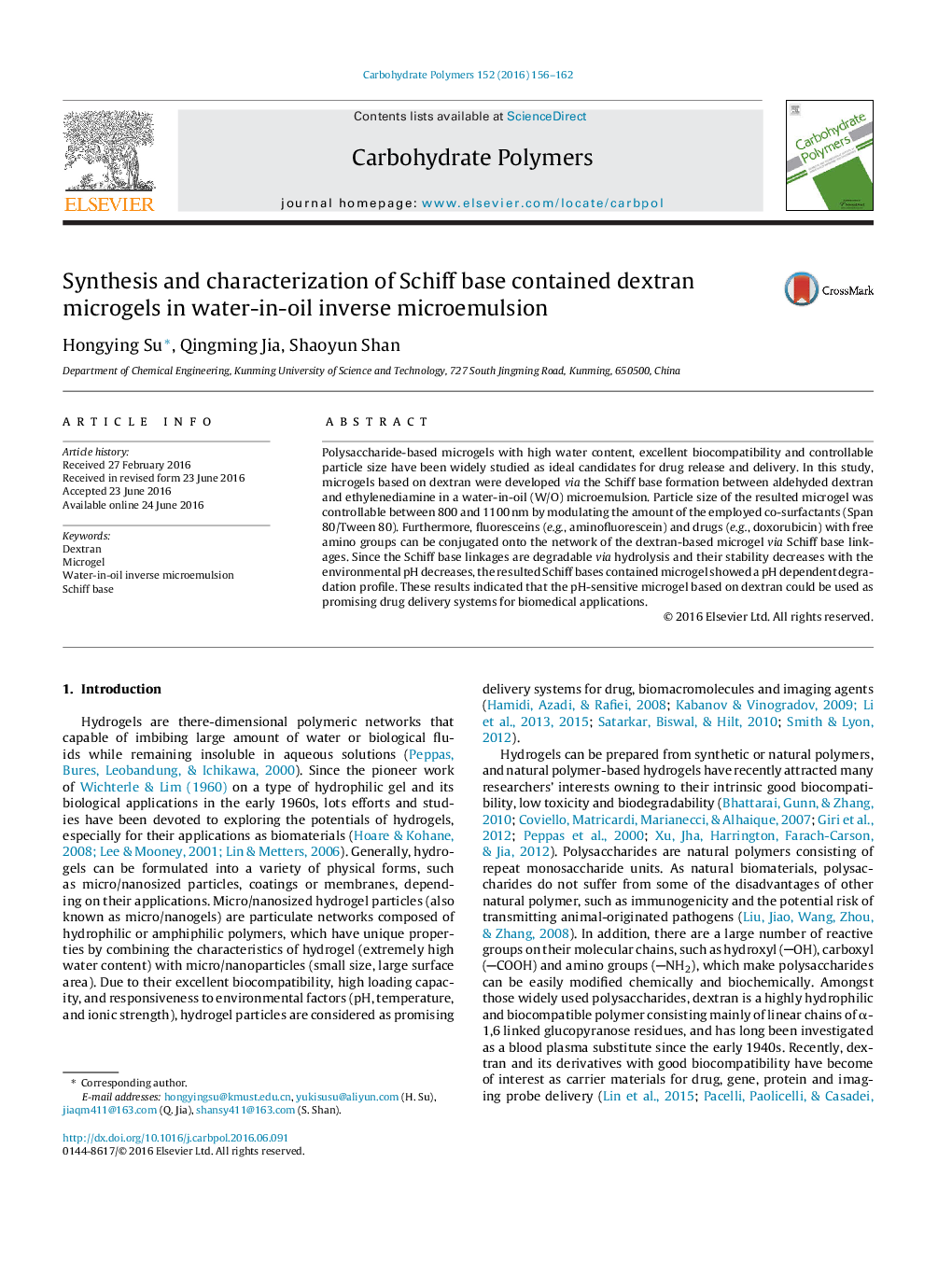| Article ID | Journal | Published Year | Pages | File Type |
|---|---|---|---|---|
| 1373631 | Carbohydrate Polymers | 2016 | 7 Pages |
•Dextran-based microgel was prepared by water-in-oil inverse microemulsion technique.•Aldehyded dextran was cross-linked with ethylenediamine via Schiff base formation.•Fluorescein and drug with free amino groups can be furtherly conjugated.•The Schiff bases contained microgel showed a pH dependent degradation profile.
Polysaccharide-based microgels with high water content, excellent biocompatibility and controllable particle size have been widely studied as ideal candidates for drug release and delivery. In this study, microgels based on dextran were developed via the Schiff base formation between aldehyded dextran and ethylenediamine in a water-in-oil (W/O) microemulsion. Particle size of the resulted microgel was controllable between 800 and 1100 nm by modulating the amount of the employed co-surfactants (Span 80/Tween 80). Furthermore, fluoresceins (e.g., aminofluorescein) and drugs (e.g., doxorubicin) with free amino groups can be conjugated onto the network of the dextran-based microgel via Schiff base linkages. Since the Schiff base linkages are degradable via hydrolysis and their stability decreases with the environmental pH decreases, the resulted Schiff bases contained microgel showed a pH dependent degradation profile. These results indicated that the pH-sensitive microgel based on dextran could be used as promising drug delivery systems for biomedical applications.
